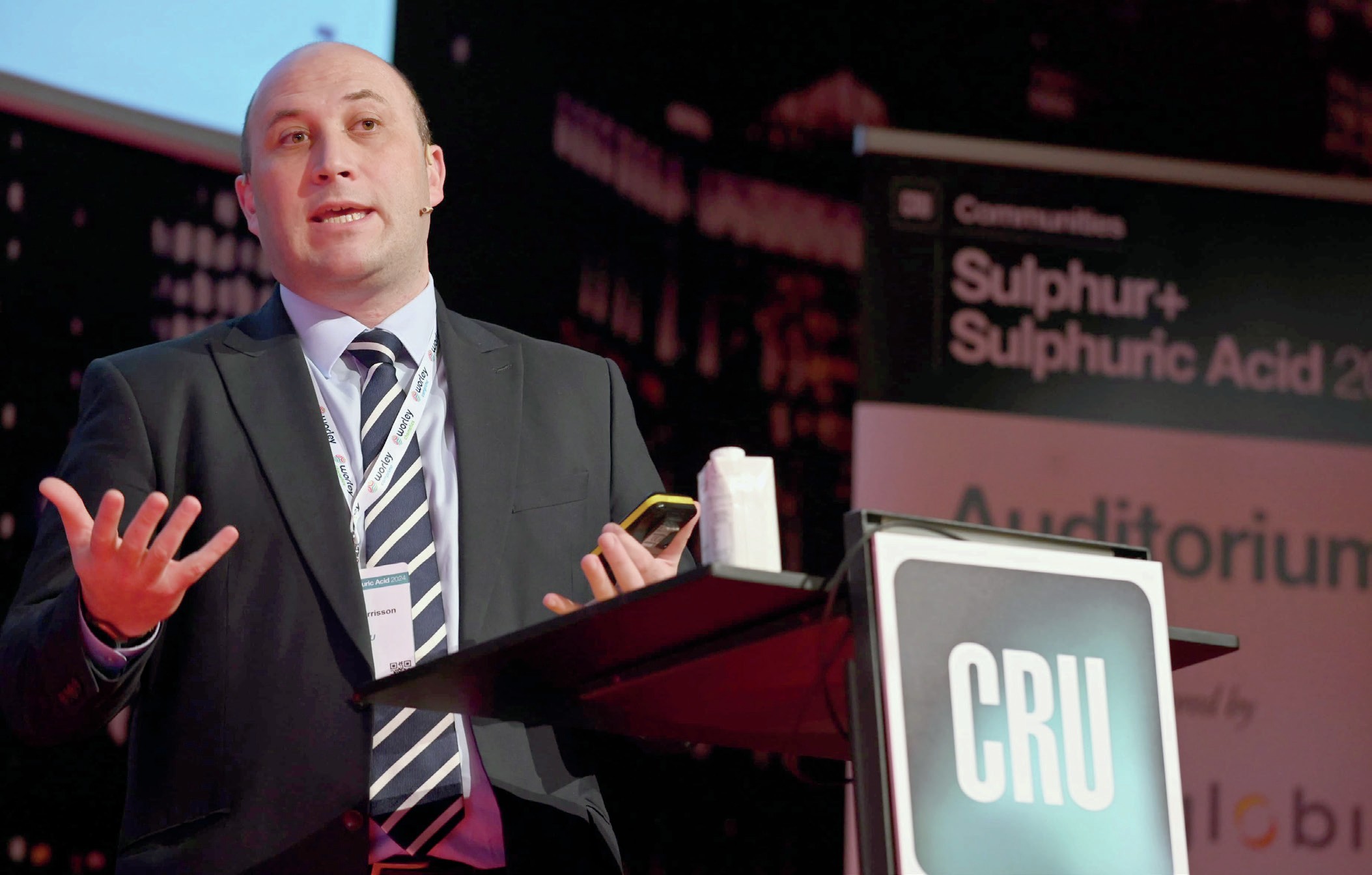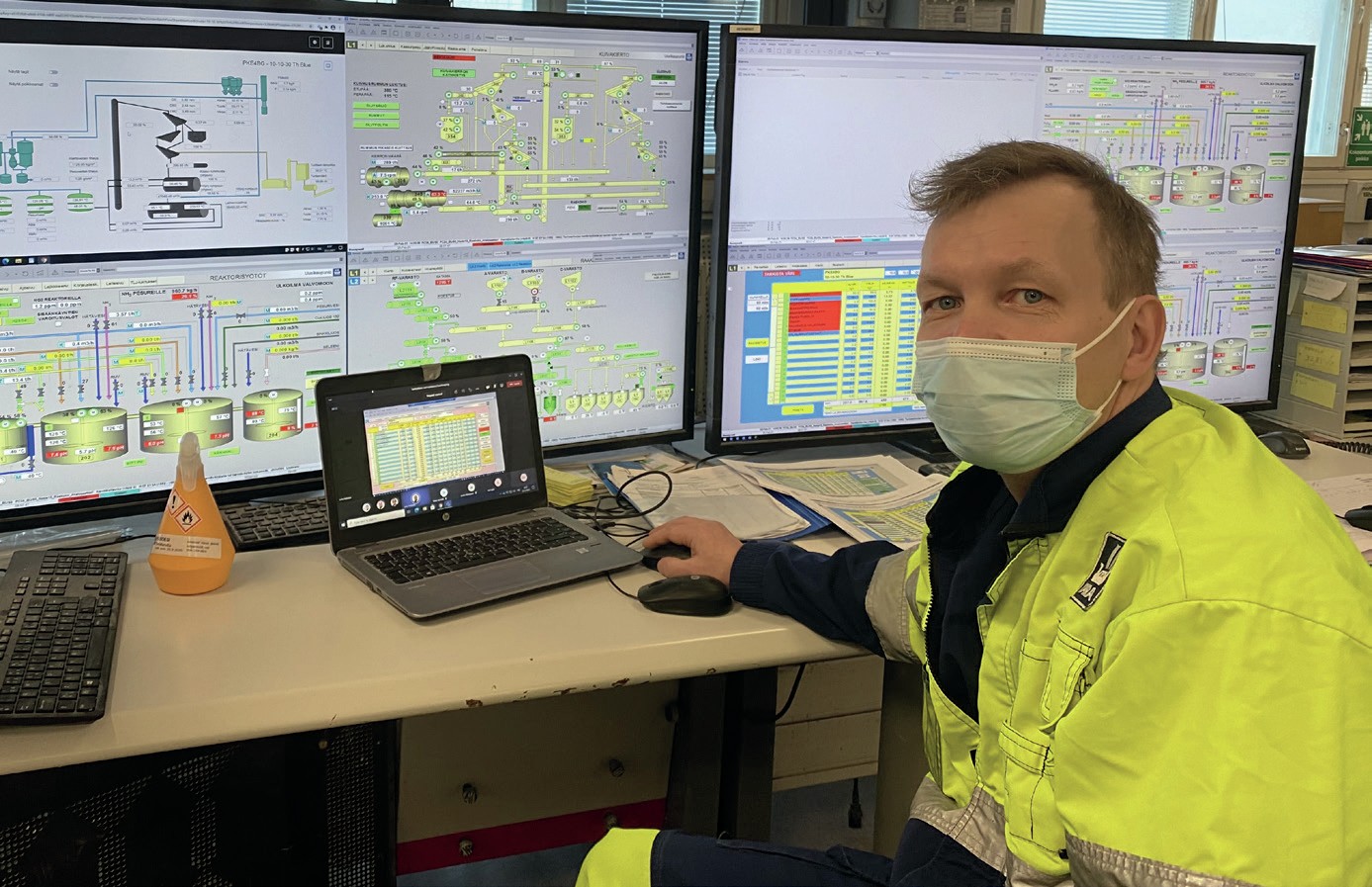Sulphur 407 Jul-Aug 2023
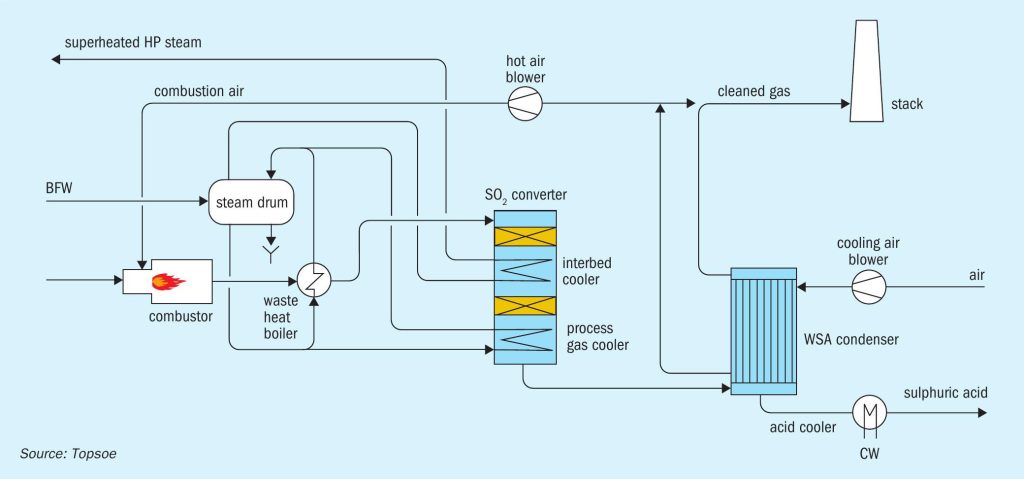
31 July 2023
When digitalisation meets reality
DIGITAL TOOLS
When digitalisation meets reality
In 2019 Topsoe launched its ClearView™ technology for WSA and SNOx sulphuric acid plants. ClearView™ is a revolutionary process health monitoring software solution to help sulphuric acid plant operators ensure plants run better, more stable and with less downtime. Now, three years later, ClearView™ has been successfully implemented at two WSA plants and several other chemical plants of Topsoe’s design, with many others in the pipeline. This article focuses on the results and learnings from the first implementation of ClearView™ at a new WSA plant at Anglo American Platinum’s Polokwane smelter in South Africa.
Nowadays, the transformation of all industries through digitalisation, big data, machine learning, and the like has become an almost daily talking point. Topsoe’s long history of service to its customers over decades means that it is continuously involved in the real-life challenges faced by plant operators. It is with this in mind that Topsoe undertook to develop the services that will offer the benefits of the so-called fourth industrial revolution to customers in the sulphuric acid sector. Increasing digitalisation of industrial plants results in generation of more and more data; data that on its own can result in increased confusion rather than clarity.
The key to taking advantage of digitalisation is to leverage the torrent of data and new computational capabilities to solve real operational issues in sulphuric acid plants.
As with any industry, there is no lack of challenges that could be addressed. For a bulk chemical market such as sulphuric acid, margins can be small, and at times non-existent as the sulphuric acid plants may also be built for environmental compliance purposes and thus always operated at cost. As such the plant operators are under constant pressure to improve operation to minimise operation cost. Ensuring optimal operation means minimising downtime, maximising throughput, avoiding costly damage to equipment and maintaining emission levels below stipulated limits.
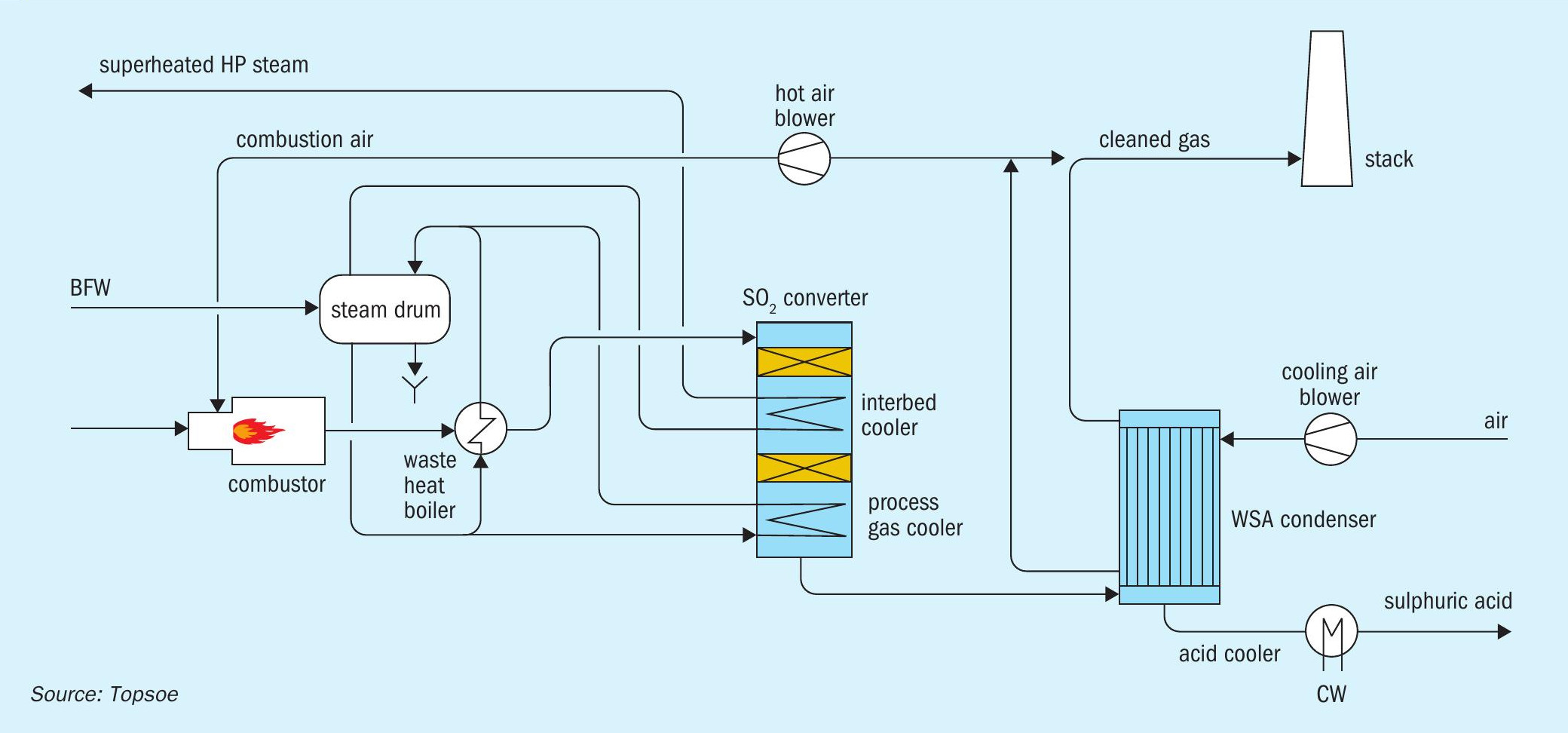
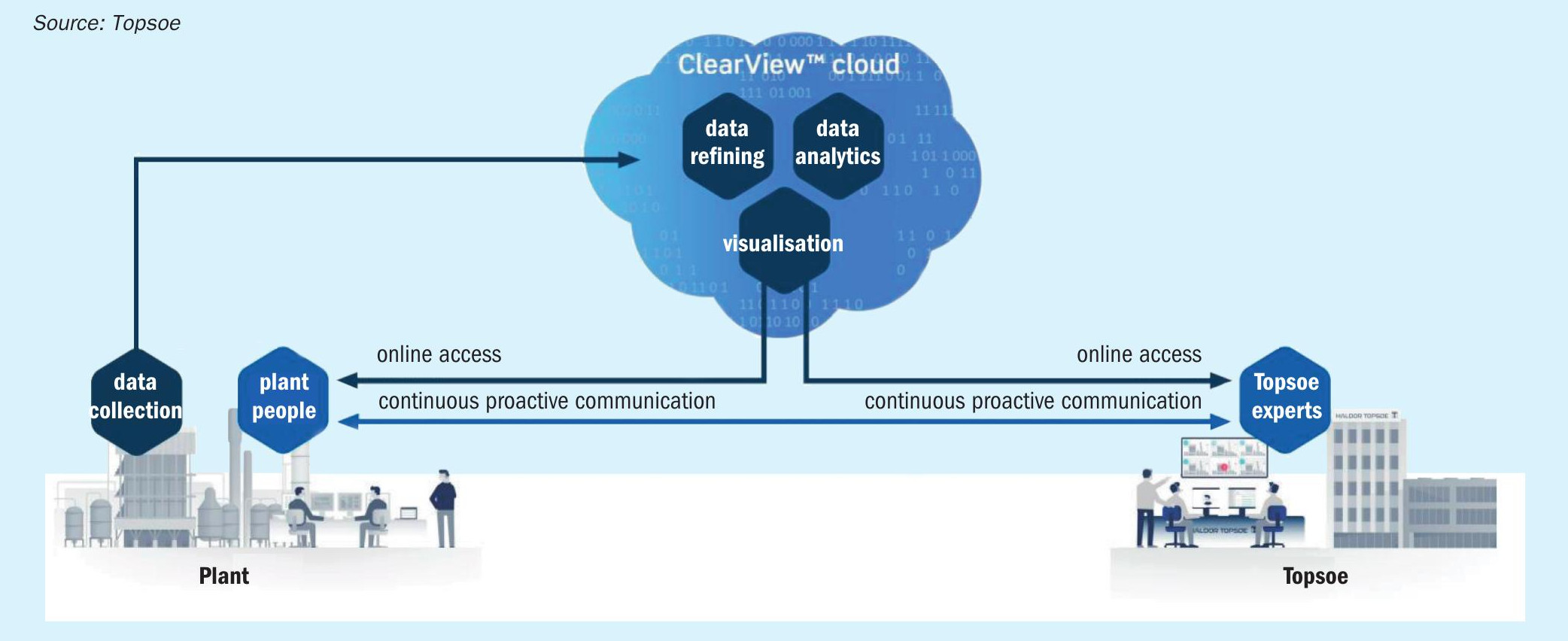
What is WSA?
Topsoe’s WSA, or Wet gas Sulphuric Acid, process is a technology which produces commercial grade sulphuric acid from a great variety of sulphur-containing streams. Depending on the stream that is to be treated the layout can vary, but it will always include two key parts: an SO2 converter where SO2 is oxidised to SO3 over Topsoe’s proprietary VK sulphuric acid catalyst, and the sulphuric acid condenser, where the product sulphuric acid is condensed in a glass tube condenser.
A simplified flow sheet of the WSA process can be seen in Fig. 1.
The WSA process is highly energy efficient, reducing the facilities carbon footprint and often generates a significant amount of high-pressure steam. A second key benefit of WSA is that it can handle high amounts for water in the gas, allowing it to treat streams that cannot be fed to conventional sulphuric acid plants. Finally, combining the advantages mean the WSA technology can also effectively treat gases which has low to very low SO2 content, while still producing commercial grade sulphuric acid, and while requiring no or very little combustion of supplementary fuel.
What is ClearView™?
Topsoe launched its connected services, ClearView™ for the Wet gas Sulphuric Acid (WSA) technology in 2019. ClearView™ WSA is a connected solution based on streaming data to an Industrial Internet of Things (IIoT) platform in which rigorous in-house models simulate process data and compare plant parameters to their optimal and healthy values with the aim to provide early warnings of process-related problems. ClearView™ WSA also monitors plant start-up and shutdown and predicts hydraulic and catalytic performance of the unit in order to provide plants with a proactive approach to shutdowns and catalyst screening, before unit capacity is affected.
Online dashboards are designed to deliver up-to-date insights directly to the relevant persons and cater to various roles in the plant, including the overall KPI focus of the senior company executives or directors and plant manager, at a glance. The online dashboards also provide alerts for the daily shift engineer and detailed optimisation screens to be used by the technical department.
The goal of ClearView™ WSA is simple, to detect and mitigate abnormal operation to prevent any surprises in the form of unplanned downtime, and to offer tools and recommendations to mitigate risks, and resolve problems on a planned basis, ensuring world-class availability and reliability.
ClearView™ is a cloud-based system (see Fig. 2), where data is sourced from the DCS historian of the plant. Data refining and analytics are carried out in the cloud, and then visualised live for both the client and Topsoe experts.
Having access to the same results and data facilitates the most powerful part of the ClearView™ service; the direct dialogue and collaboration between the client’s operating team and Topsoe technical service.
Data treatment in the ClearView™ cloud
Fluctuations in chemical unit operations are a given in any process industry, but this is especially the case in one dealing with processing sulphur-containing off gases, as is the case with many WSA units.
To make meaningful and actionable conclusions regarding the performance of any piece of equipment, or the process as a whole, requires a consistent mass and energy balance. The starting point is to identify a period of time when the unit is steady enough to perform a mass and energy balance – attempting to do so for too short a period of time will introduce errors due to process fluctuations, while taking a period that is too long risks compressing periods and subjecting them to excessive smoothing, removing necessary details.
Another key parameter to be able to make meaningful evaluation of the condition of the unit is to have consistent data.
It should, however, come as no surprise that mass and energy balances rarely close, with errors arising from a multitude of sources. Instrument measurement errors manifests themselves due to a number of causes, including inherent instrument error, incorrect calibration or compensation, fouling, measurement location, poor process gas mixing (e.g., in the case of temperature measurement), and inaccurate laboratory or analyser measurements.
The solution to this is data reconciliation, or the process of “smoothing out” the error by attributing error to various instruments until the mass and energy balances close.Data reconciliation requires a model that explains the relationship between process variables. ClearView™ uses the full process model that is used to design WSA units.
Each plant is individually assessed to establish the parameter selection with the strongest links to provide a meaningful result.
Not only does the data reconciliation ensure good data quality for further analysis, by identifying outliers it can also give important clues to troubleshooting or help identify faulty sensors.
Data analytics in the ClearView™ cloud
One of the common questions in operational environments when a piece of equipment doesn’t behave as expected and a process value is abnormal is , “What is the value normally?”.
If rigorous models to simulate equipment are in place, the expected and measured process parameters can be compared continuously. This is now possible with a reconciled dataset – a single error would have made modelling difficult. Ideally, discrepancies should be detected, before alarms on the DCS system are activated. However, this requires that a rigorous model is developed – this could be a hydraulic model to predict the pressure in a line, or a heat exchanger model to predict the outlet temperature of a heat exchanger.
Rigorous models are, however, not always available. In these instances, a comparison of current and past behaviour for similar process conditions is valid and extremely useful.
Continuous performance assessment through ClearView™ builds up a database of expected values where rigorous models are available, and historical parameters where they are not. Earlier detection means earlier action, and thus lowers risk of unplanned downtime.
Anglo American Platinum, Polokwane smelter
Anglo American Platinum (AAP) operates the world’s largest electric furnace for platinum production at its Polokwane smelter in the Limpopo province, South Africa. Implementation of South Africa’s new “minimum emission standards”, or MES, meant that SO2 abatement was required for the off gas of the furnace. After having evaluated over 40 different technologies, AAP chose Topsoe’s wet gas sulphuric acid (WSA) technology with an associated wet gas cleaning plant from GEA. Fig. 3 shows a photo of the WSA plant.
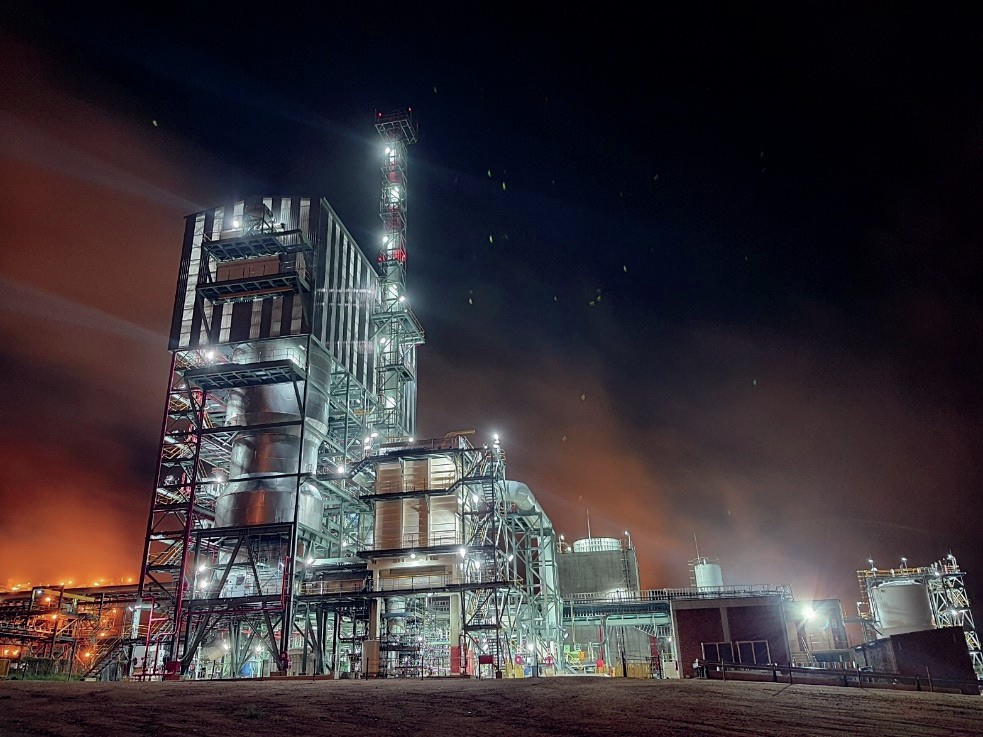
Commissioning during a pandemic
By the time the new WSA plant was to be commissioned during the second quarter of 2020, the Covid-19 pandemic was in full force. As a result of the pandemic, travel restrictions were in place which prohibited Topsoe experts from visiting the site for normal commissioning activities. Not only were Topsoe experts not able to visit, but other parties and AAP employees’ access to site was also severely limited. Had nothing been done, the project would have been delayed, increasing cost and resulting in delayed implementation of SO2 abatement at the facility.
AAP did not halt the project, however, but implemented a strategy combining digital tools, close contact and careful planning to ensure that the legislative due date could still be met, and commissioning could be carried out safely.
On the technical side, some more advanced tools were applied. One such example is Real-Wear glasses, allowing field work with both hands free, while having live video guidance from Topsoe’s experts in Denmark. Most of the work could, however, be done by use of simple, yet effective, technology, such as using video conferencing software in combination with smartphones and tablets.
In preparation for the commissioning, a service level agreement was signed between Topsoe and AAP. As part of the agreement, AAP’s commissioning team had unlimited access to Topsoe’s experts during business hours. The close contact between AAP and Topsoe allowed the commissioning to proceed without significant delays, despite the limitations brought on by the pandemic.
Even during normal circumstance, the commissioning of any new industrial plant requires detailed planning and careful execution to proceed smoothly. With the limitations introduced by the Covid-19 pandemic this became even more critical. No digitals tools or remote service would have helped if the planning and coordination had been lacking. AAP understood this and ensured that it got the attention it deserved. The result was that the hurdles of the pandemic could be overcome, and the plant could be successfully commissioned with very little on-site support.
Start-up
During start-up much the same strategies were applied as during the commissioning phase, however, with one exception; ClearView™ was also available as an additional tool. While all the parameters had not yet been fully tuned, ClearView™ could still offer a number of important benefits, which made it possible to start up the new plant remotely.
Topsoe engineers could follow the startup process in real time, and both AAP and Topsoe personnel would be alerted if there were deviations from the guidelines or if the conditions could affect safety or equipment lifespan.
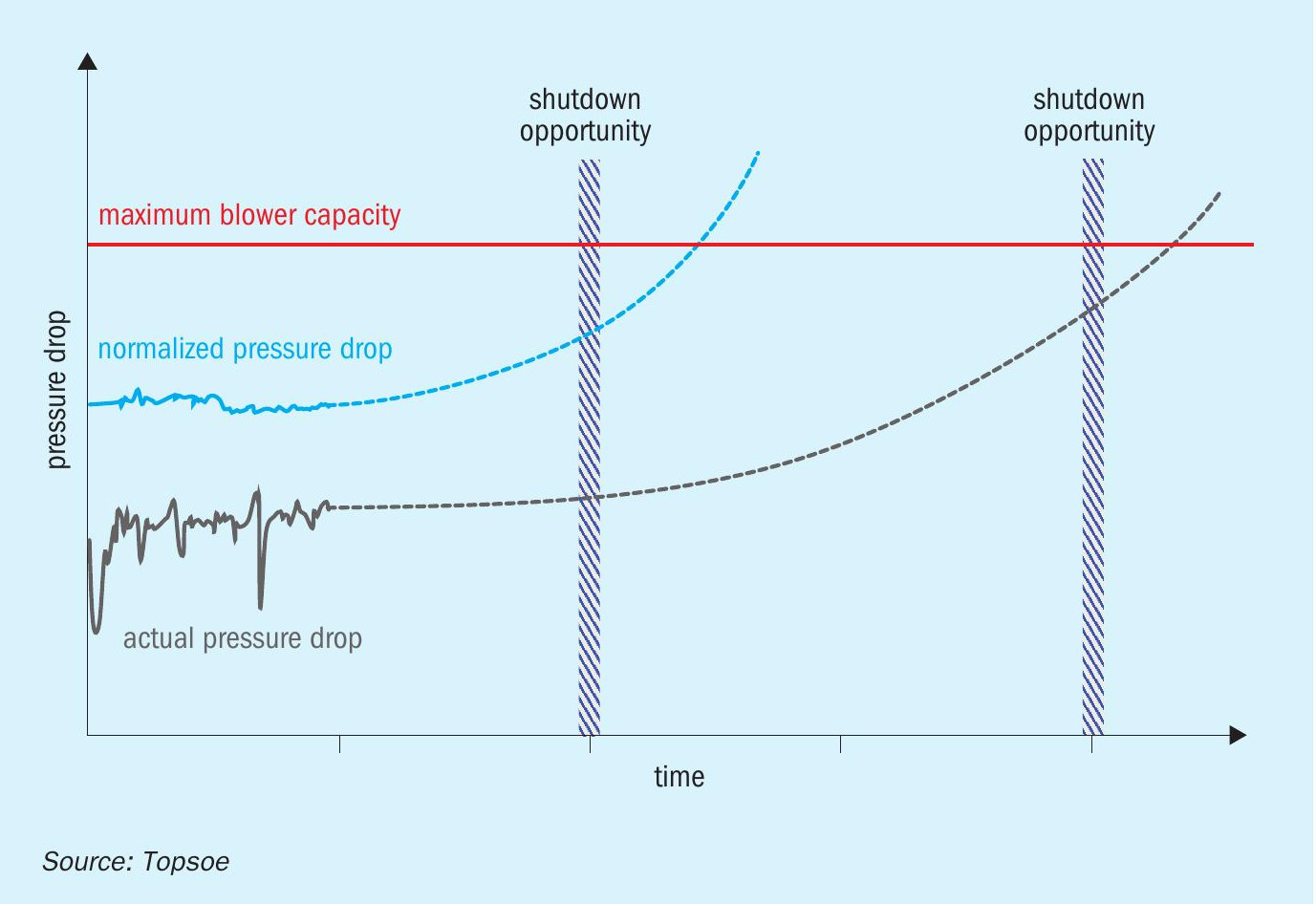
In the end, ClearView™ was one piece of what made it possible to successfully start up the plant despite the restrictions of the pandemic. The main benefit was how it helped facilitate collaboration between AAP and Topsoe, despite the long distance between the two parties, making the output greater than the sum of the two. This learning shows that rather than being a substitute for good operators and engineers, digitalisation can often be a tool to harness their skills and knowledge better.
Day to day benefits of ClearView™
The practical application of ClearView™ in day-to-day operation of the WSA plant can be divided into two different parts: direct feedback from the system to operators or engineers at the client end, and weekly meetings between the Topsoe technical service engineers and the customers operational team. The experience thus far has been that the largest value is created for the customer during these frequent meetings.
The status meetings focus on supporting the customer with information on their key questions, addressing the most common issues based on Topsoe’s vast technical service experience, and finally to identify and troubleshoot actual or potential problems. To summarise, the main points on the typical agenda for the status meetings are:
- hydraulic monitoring and assessment of equipment and catalyst;
- dew point evaluation;
- start-up and shutdown sequences;
- optimisation of operating parameters;
- evaluation of outliers and troubleshooting.
Hydraulic monitoring
The hydraulic monitoring part of Clear-View™ seeks to answer three of the most common and important questions operators of sulphuric acid plants have:
- How long can we run before we need to shut down?
- Which part of the plant is having problems?
- Can we do anything to mitigate or counter pressure drop build-up?
The way most sulphuric acid plant operators would try to answer these questions would be to compare actual pressure drop values with design and start-of-run values. For many sulphuric acid plants, and certainly for most WSA plants, the conditions are in a constant state of change. Adding to this, design values often have margins which will mask emerging hydraulic limitations. Together these two facts make such comparisons difficult, and problems may only be discovered once they are severe.
In ClearView™ the issue of comparing to design and start-of-run values is solved by comparing with simulated values for the present conditions. These simulations are done using the full plant model used to design the unit and means that deviations will be noticed as they emerge.
The second part of the ClearView™ service involves the plotting of the deviation between the simulated and actual pressure drops over time for every part of the process. This is illustrated to the customers operational team in a dashboard, giving at a glance information if a problem has arisen in any part of the plant. This answers the second question “Which part of the plant is having problems”.
One example of how this approach was applied at AAP was when one of the deviations started to increase at an alarming rate. Both Topsoe and AAP were alerted of the deviation by the Clearview™ system and an action plan could be developed to investigate and potentially rectify possible root causes for the increasing pressure drop. The plan started with simpler explanations, such as instrument failure, and stretched to much more severe, such as critical damage to some of the equipment in the WSA plant. This time around, the deviation turned out to be caused by a common instrument error, but had it turned out that the cause was more severe in nature, the plan would have been ready to address it.
For those parts of the plants where either some deviation has emerged, or based on historical experience needs more scrutiny, ClearView™ allows the pressure drop to be studied in more detail. Other than just looking at the simulated and actual values, the software also predicts when critical pressure drop will be reached, both at design and current gas flows (see Fig. 4). The prediction is an excellent starting point for discussion on when to plan outages, or how to allocate activities such as catalyst screening or equipment cleaning. This answers the first question “How long can we run before we need to shut down”, as well as helping the operational team minimise downtime.
In the case of AAP, this is used to plan maintenance activities in already scheduled downtime, ensuring that the time in between outages is spent operating the plant.
This leaves the final question “Can we do anything to mitigate or counter pressure drop build-up?”. While ClearView™ has built in tooltips suggesting what can be done to address some of the more common issues, it will be impossible to have solutions built in for all potential issues in the plant. Therefore, discussing action plans to answer the very question of “what can be done” is a key part of the reoccurring meetings. Once again this illustrates how ClearView™ is at its most effective when it is used to augment traditional technical service.
Dew point monitoring
Ensuring that all surfaces within the WSA plant are above the dew point of sulphuric acid is a key point in obtaining optimal plant lifetime and minimising maintenance cost. Disregarding acid dew points will have negative impact on plant lifespan.
Guidelines and procedures have long been available to ensure sufficient margin to the acid dew points are always maintained. To further support clients’ ability to maintain safety margins, ClearView™ calculates the margin to the acid dew points continuously for all critical sections of the WSA plant. The margins are visualised on their own dashboard. The calculations are based on Topsoe’s proprietary models and provide an accurate estimate of the actual dew point at current conditions, a significant improvement over comparison to single precalculated values at design conditions and a few operating cases.
In addition to simply displaying dew points and margins to dew point throughout the plant, the software will also alert the operations team if any of the safety margins are being violated. With the help of ClearView™ , AAP has been able to minimise the number and duration of events where safety margins are being violated. As a result of this work, and Anglo American’s diligent maintenance program overall, the first inspections have shown that the plant is in very good condition and is expected to have a very long lifetime.
Start-up and shutdown
Start-up and shutdown are some of the more demanding states of operating a sulphuric acid plant, with a lot of parameters and requirements that need to be managed to ensure this is done safely and effectively. During the initial start-up, licensor supervisors will typically be present (or as in the case for Polokwane project, support remotely) to ensure the plant is started up safely, through adherence to all applicable guidelines. Sulphuric acid plants operating on metallurgical off gases will often experience frequent stops due the upstream operation, and it is not feasible to always have licensor site support for each startup. With frequent outages, good operating procedures for start-up, hot standby and shutdown scenarios are especially critical for WSA units.
The optimisation of operating procedures improve safety, increase equipment lifespan and reduce time spent on startup and shutdown, and is one thing that sets experienced operational teams apart. This is even more true in the case of the Polokwane smelter WSA plant, where a new operations team had been hired with limited experience in sulphuric acid plants operation in general, or WSA plants in particular.
Topsoe addressed this area of concern through ClearView™ which monitors conditions during a start-up or shutdown and compares them with Topsoe guidelines. As soon as a part of the plant has reached a safe state (right temperature, pressure, flow etc.) it is indicated by colour coding on the start-up/shutdown dashboard, giving go-ahead to continue to the next part in the sequence as part of the plant changes state.
Assisted by the feedback of the startup and shutdown monitoring, together with the weekly meetings, AAP has already made several revisions of their procedures for start-up and shutdown. Since the latest revision was implemented, every start-up and shutdown has been carried out without violating any guidelines, ensuring that no damage will be sustained to the plant during these critical operations. Not only is AAP now avoiding damage to their plant; they have also been able to reduce start-up time of the plant by a staggering 75%. In short, their own dedicated efforts assisted by the ClearView™ service has allowed AAP to achieve benchmark start-up times in just one year.
Optimising performance
Rarely does any industrial plant ever run completely at design conditions, and there will always be a myriad of parameters that can, or even should, be optimised to achieve good operation. WSA plants are no different, and Topsoe’s technical service team has always offered advice on how operation of the WSA plants can be optimised following site visits or when receiving data from customers. Partly due to the time required for the customers to extract data, if there is nothing of particular concern, these manual optimisation with support from Topsoe is generally only done at very low frequency. This all changes with ClearView ™ , where a reconciled dataset is available to both Topsoe and the customer on an hourly basis. Some optimisation is suggested by ClearView ™ itself, and it also forms a natural agenda point for the weekly meeting. Through this continuous improvement and adaptation to new conditions are ensured.
An example of how this was applied at AAP was with regards to inlet temperatures to the catalyst beds. The plant was designed for an SO 2 content of up to 3%, however, so far, the plant has not operated on a gas strenght in excess of 2.5%. As a result of the lower feed SO 2 content, there is excess catalyst available compared to what is needed to achieve the target conversion. This excess catalyst can be utilised to allow operation at lower temperatures without exceeding emission limits. With joint access to cleansed data in ClearView ™ , the AAP operations team together with Topsoe’s technical service engineers could optimise the catalyst bed temperatures, while also making sure that the emission and other key performance parameters were still within acceptable limits.
The output of the optimisation was a new set of operating temperatures, tailored for the actual conditions and current catalyst activity. The new operating point resulted in a saving in fuel and carbon footprint of the unit, while still making sure all targets were met.
Troubleshooting with digital tools
Not only will ClearView ™ help identify looming issues earlier through comparison with built in models and access to reliable up to date data, it also helps the customer and the Topsoe technical service team to troubleshoot those issues.
One example from the Polokwane smelter was tied to an unknown high SO 2 emission following the initial start-up. At first it was thought that the elevated emission would be resolved by fine tuning of operating parameters, however, as the plant was operating stable, it became apparent that the emission persisted even with optimised settings. Detailed evaluation by AAP’s operational team and Topsoe multidiscipline experts followed.Using the information available through the ClearView™ system, many potential root causes could quickly either be ruled out completely or deemed highly unlikely. Examples of ruled out root causes were low catalyst activity, changes in feed gas composition and faulty readings.
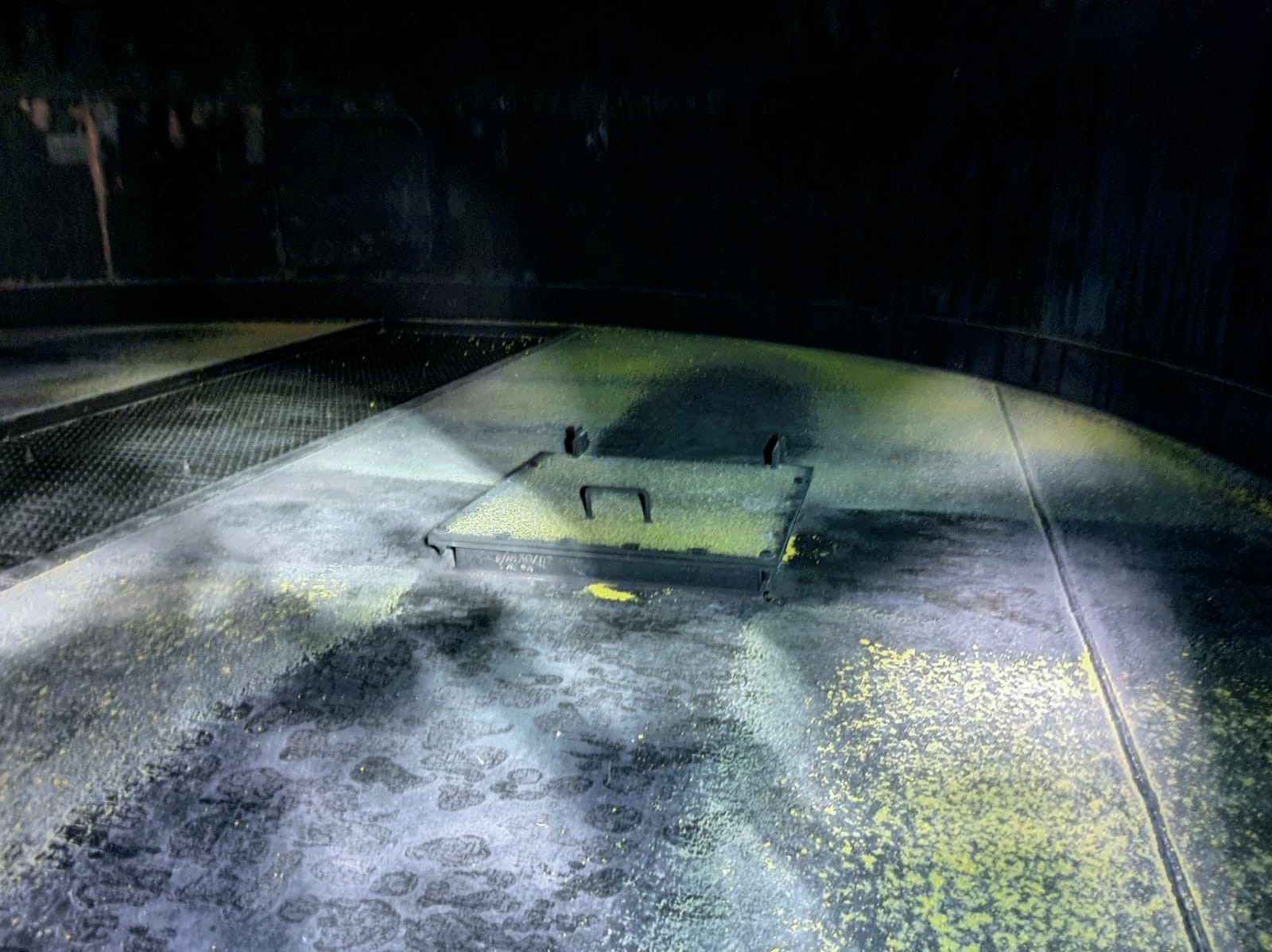
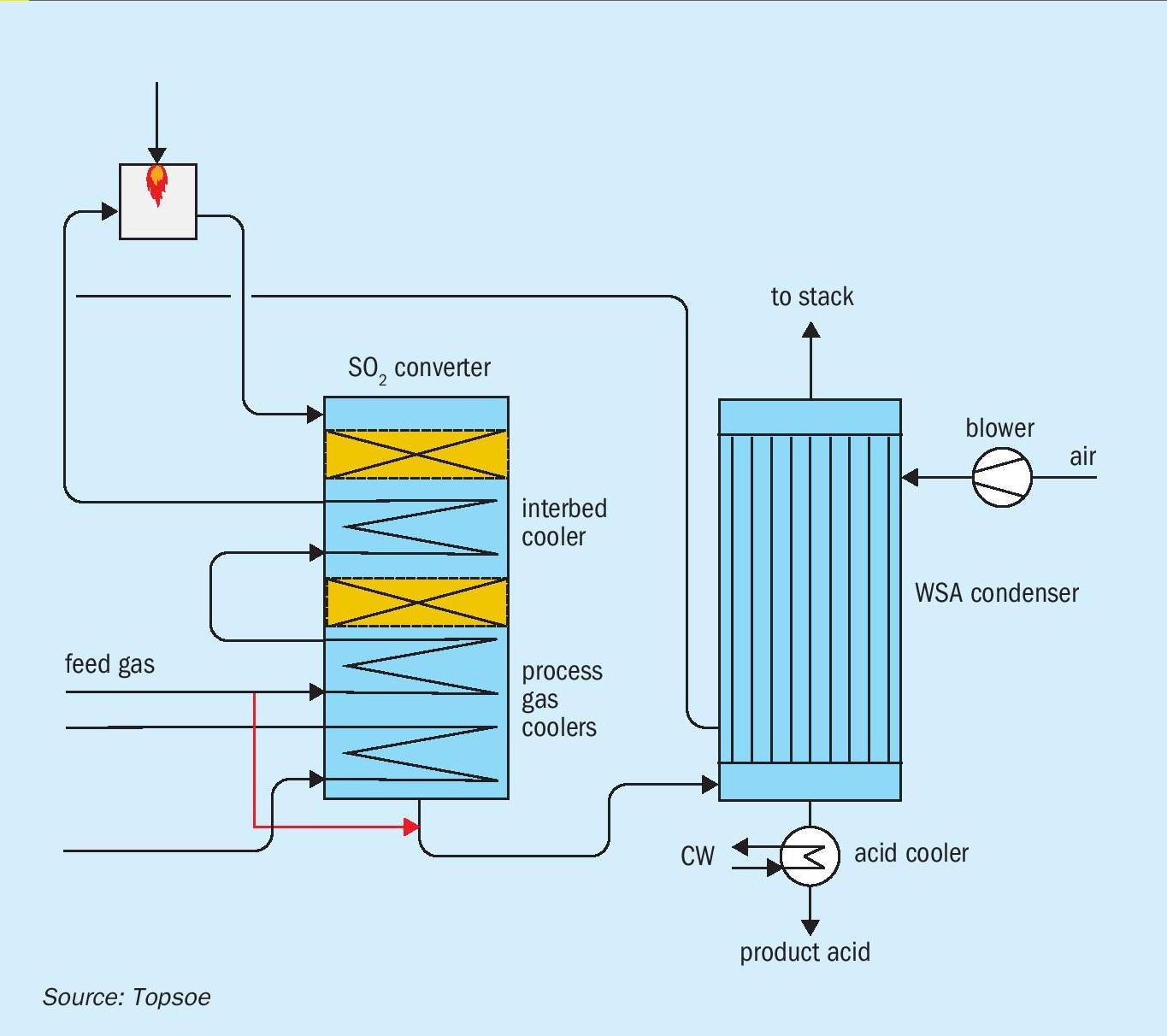
The result of the evaluation was a list of potential root causes, all related to the second feed/effluent heat exchanger:
- second feed/effluent internal hatches;
- second feed/effluent heat exchanger welds to converter shell;
- second feed/effluent heat exchanger tube-tubesheet welds.
Based on the prioritised list, an action plan was developed to prepare for the upcoming shutdown. This meant that the tools and knowhow to efficiently check, and potentially rectify, all of the points on the list were available as the plant was shutting down. When the plant had cooled down sufficiently for safe entry, it was quickly concluded that the source of the high emission was the first point on the list; a leaking access hatch. The hatch was lacking the gasket and was held in place by just 2 out of the 16 specified bolts (see Fig. 5). The result was that some of the feed gas could bypass the entire SO2 converter, see marking in Fig. 6.
The problem was simple to address, but even if the higher emission would have been caused by damaged equipment, AAP would have been prepared to repair it. Once the leaking hatch had been addressed, the plant could restart with normal SO2 emission.
Conclusion and future
Experience from the WSA unit at Anglo American Platinum’s Polokwane smelter shows how digital tools and strategies can be bring real operational benefits.
During commissioning and startup, AAP showed how relatively simple and readily available tools with the right strategy and structure could help overcome the obstacles brought on by the pandemic.
From the start-up through to normal operation, ClearView™ has helped answer key operational questions, such as “When do we need to shut down” or “How do we increase equipment lifespan”. By supplying the operational team with actionable information, ClearView™ has helped AAP to operate the new plant more efficiently, avoid conditions which might cause long term damage to the plant and facilitate troubleshooting.
Coupled with traditional technical service, ClearView™ can facilitate a positive learning loop between the customers operational team and Topsoe’s technical service team. The learning loop and AAP’s devotion to excellence has propelled them to a benchmark operator within the first year of operation, while also providing Topsoe with fast and reliable feedback on everything from commissioning and operating guidelines to plant design.




